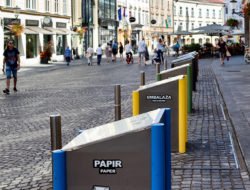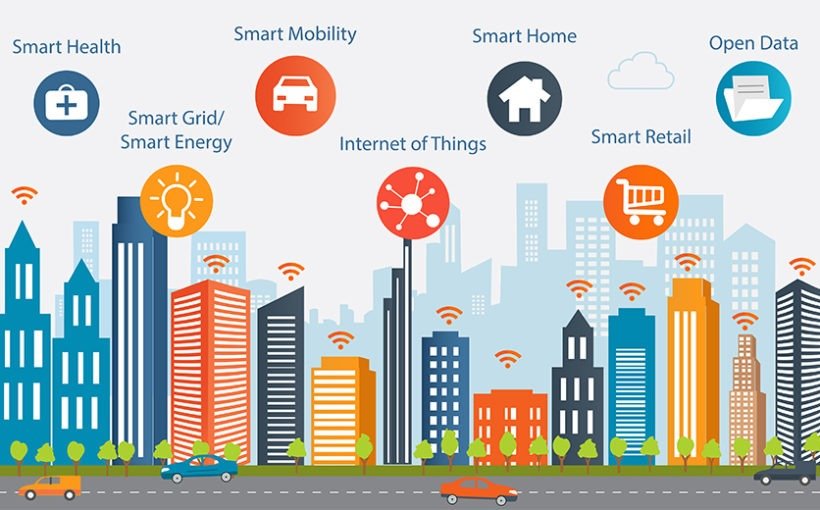Population growth coupled with the phenomenon of urban densification implies new challenges for cities. Topics such as mobility, use of energy resources, quality of the environment, connectivity, governance and citizen involvement deserve innovative approaches. Welcome to Smart City, the intelligent city.
To make the transition to a “Smart City” model, cities must be able to mobilize all stakeholders: governments, key economic players, citizens etc. In Belgium several municipalities have tackled the problem head-on in order to achieve concrete results that are part of a long-term approach.
Ghent focuses on “Smart Citizens”
Ghent has embarked on a reflection on the city of tomorrow, involving all stakeholders in its approach. By opting for the “Quad Helix” innovation model, the city is organising its discussions by confronting the opinions of the four pillars in order to explore the development tracks for making the city “smarter”. It has therefore addressed the public authorities, representatives of the economic and academic world, and civil society.

“We want to make Ghent a model Smart City in Belgium,” explains Karl-Filip Coenegrachts, who is coordinating the project. “But our goal is not to want to transform the city into a technological showcase at all cost. Our project is concerned rather with the added value of innovation for the inhabitants. I prefer to talk about Smart Citizens: involved citizens who take ownership of their city and make it evolve to better meet the challenges of tomorrow.”
This approach has already yielded concrete results, such as for example the provision of an Open Data portal, accessible to developers but also useful for the whole population who can find applications to improve mobility or the air quality. The city has also tested the possibility of equipping dustbins with smart sensors to improve the waste collection and treatment process.
“We are also closely following technological developments, including optical fibre, to improve the connectivity of the city and our economic competitiveness for the next 20 years,” continues Karl-Filip Coenegrachts. “The idea is to take the time to identify the technology that will best withstand the years and will prevail over the very long term.”
According to the ranking produced by the team in charge of the “Smart Cities” study at the University of Vienna, Ghent is the first Belgian city in 17th place.
Seraing adopts a master plan for the next 30 years
The former spearhead of the Liege steel basin, Seraing was seriously affected by the decline of heavy industry. About 15 years ago, however, the city launched a broad conversion strategy including economics, which resulted in the adoption of a master plan for the next 30 years (controlled by ERIGES and completed with a social master plan and a master park).
This roadmap draws the contours of the Seraing of tomorrow in a holistic vision of the city: repurposing old industrial sites, developing public parks, focusing on clean mobility, highlighting products from short distribution chains to stimulate the local economy, etc.

“For many people the Smart City concept is very abstract,” observes Philippe Compère who is leading the European RemoUrban project (see below) for the city via the Association for the Economic Redeployment Seraing Basin (Association pour le Redéploiement Economique du Bassin Serésien, AREBS). “But as soon as they discover the many ongoing projects, they understand the importance of the issues. Seraing has suffered from a negative image for a long time. Now, citizens can see the tangible benefits of a sustainable transition strategy focused on the long term. Two concrete examples: we set a goal that every person can find a public park within a 10-minute walk from their home; the Gastronomia project to transform the old historic industrial buildings into a huge covered market to showcase produce from organic farming and short supply chains.”
There are numerous other examples. Seraing is thus the first Walloon city to have an entirely passive public building. Moreover, the city is involved in the RemoUrban project as part of the European Commission’s Horizon 2020 Lighthouse program. Three pilot cities have been designated (Nottingham in the UK, Valladolid in Spain, and Eskisehir in Turkey). Seraing is one of two “followers” cities. “We can thus observe the projects of the pilot cities of our project, and partner projects, and analyse what could be replicable for us in a sustainable manner,” concludes Philippe Compère.
© Photos : iStock /monicaodo
Tags: Gand, Horizon 2020, Open Data, RemoUrban, Seraing, Smart Cities, smart city






































